Samsung – 6.0 cu. ft. Front Control Slide-in Gas Range with Wi-Fi – Fingerprint Resistant Stainless Steel
-
( 8 Reviews )Rated 4.50 out of 5 based on 8 customer ratings08
The Samsung Front Control Slide-in Gas Range is fully Wi-Fi connected and voice enabled, making it easy to create delicious meals for your family.
-
GE 5.3 cu. ft. Slide-In Gas Range with Steam-Cleaning Oven in Stainless Steel
Rated 4.56 out of 509GE 5.3 cu. ft. Slide-In Gas Range with Steam-Cleaning Oven in Stainless Steel
Rated 4.56 out of 509
Ready2Fit™ guarantee
If your Samsung front control slide-in range doesn’t fit your 30″ freestanding range cutout, enjoy $100* on us to cover any countertop modification costs.1
Fingerprint Resistant Finish
Fingerprint resistant, for an everyday beautiful finish.
Flexible Cooktop
Get to high heat quickly for searing meat or boiling water, or turn down to a simmer to make your favorite sauces. Easily slide your pots and pans across the seamless, edge-to-edge grates covering a 5 burner cooktop.
2 Power Burners
Quickly boil water for soups or pasta with the 2 power burners.
Large Oven Capacity
This large 6.0 cu. ft. oven fits multiple meals at one time, or it can easily accommodate big casserole dishes or roasting pans.
Wi-Fi Connectivity
Monitor and adjust cook time and temperature of your oven, right from your smartphone through the SmartThings™ App.2
Voice-Enabled
Control your oven by voice when you’re busy doing other things by using your favorite virtual assistant, whether it’s Bixby, Alexa or Google.3
Glass Touch Controls
Glass Touch Controls offer a premium design that is easy to use and clean
Self Clean
Get help from your oven with Self Clean. The self cleaning system deep cleans by heating to a high temperature to burn off grease and food residue.
1Visit samsungpromotions.com/SlideInReady2Fit for details.
2Available on Android and iOS devices. A Wi-Fi connection and a Samsung account are required.
3A Wi-Fi connection and a Samsung account are required. Bixby is Samsung’s brand of artificial intelligence (AI)/Internet of Things (IoT) voice assistant. Voice commands are available on Android and iOS devices.
Additional information
| Product Depth x Height x Width (in.) | 28 11/16 x 36 1/4 x 29 15/16 |
|---|---|
| Depth Without Handle | 26 7/16 inches |
| Depth With Handle | 28 11/16 inches |
| Range Type | Slide-In |
| Oven Convection | No |
| Oven Cleaning Method | Self-High Heat Cleaning |
| Single/Double Oven | Single Oven |
| Cooktop Surface Type | Grate |
| Cooktop Surface Color | Black |
| Number Of Burners | 5 |
| App-Controlled | Yes |
| Works With | Amazon Alexa, Bixby, Google Assistant |
| Color Finish | Stainless steel |

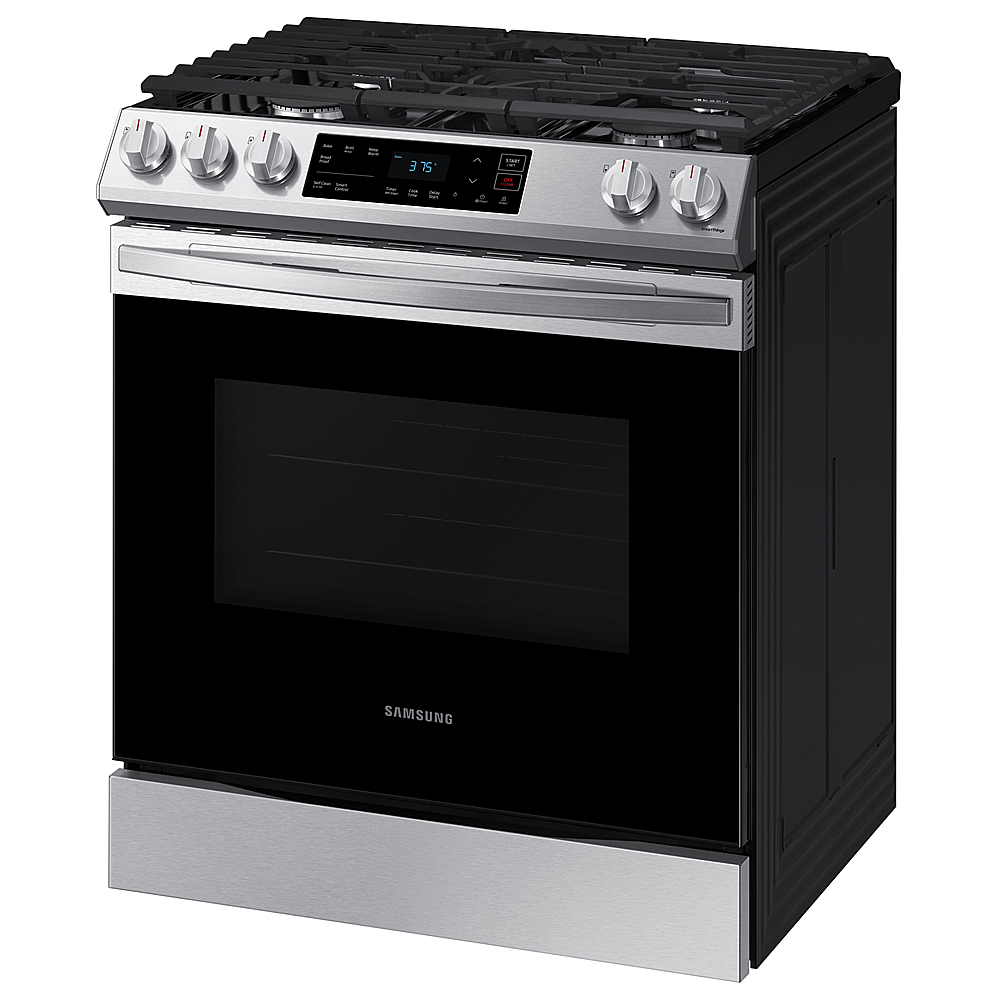
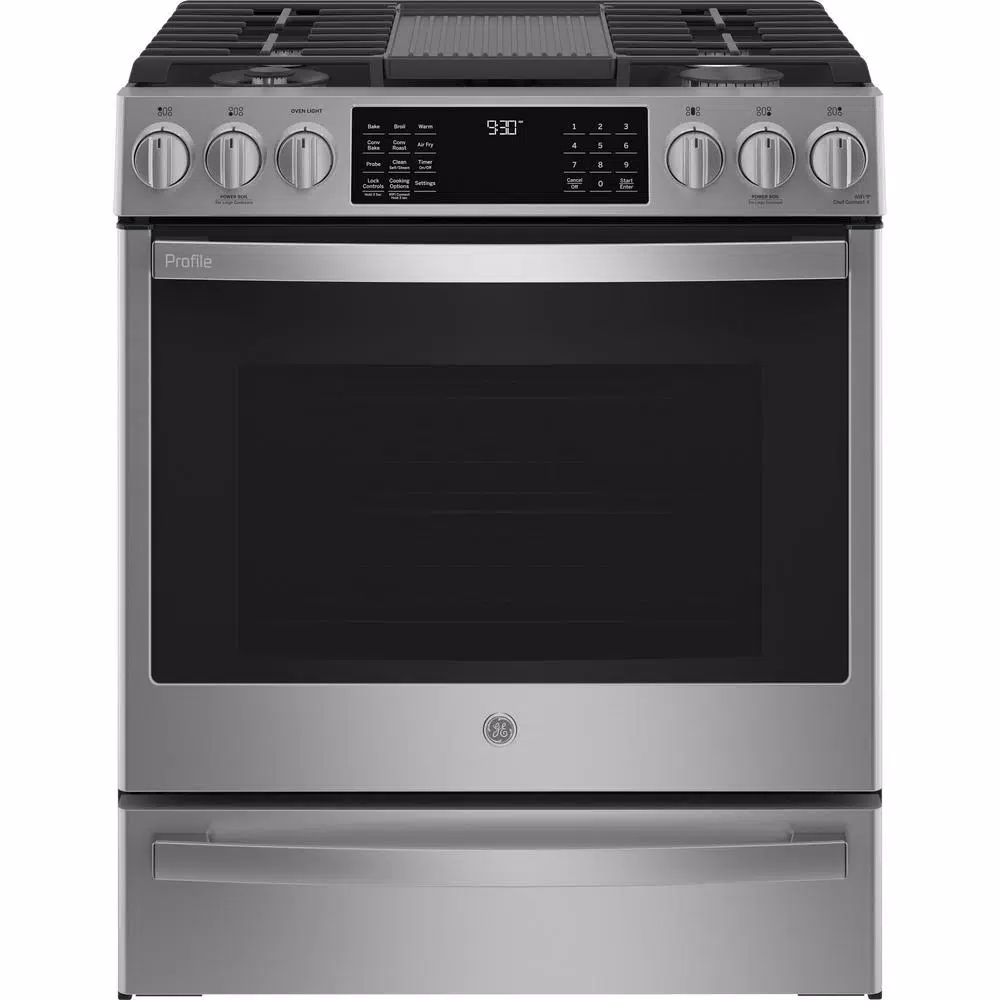
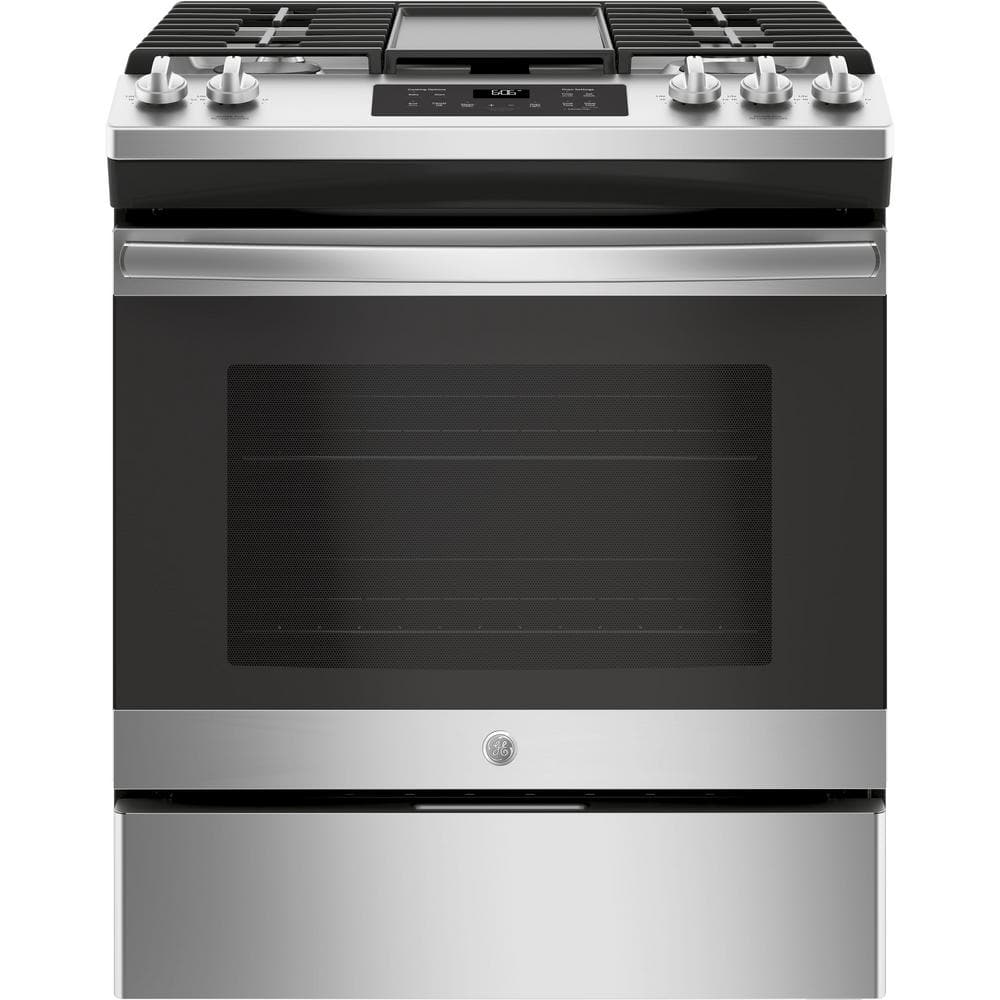
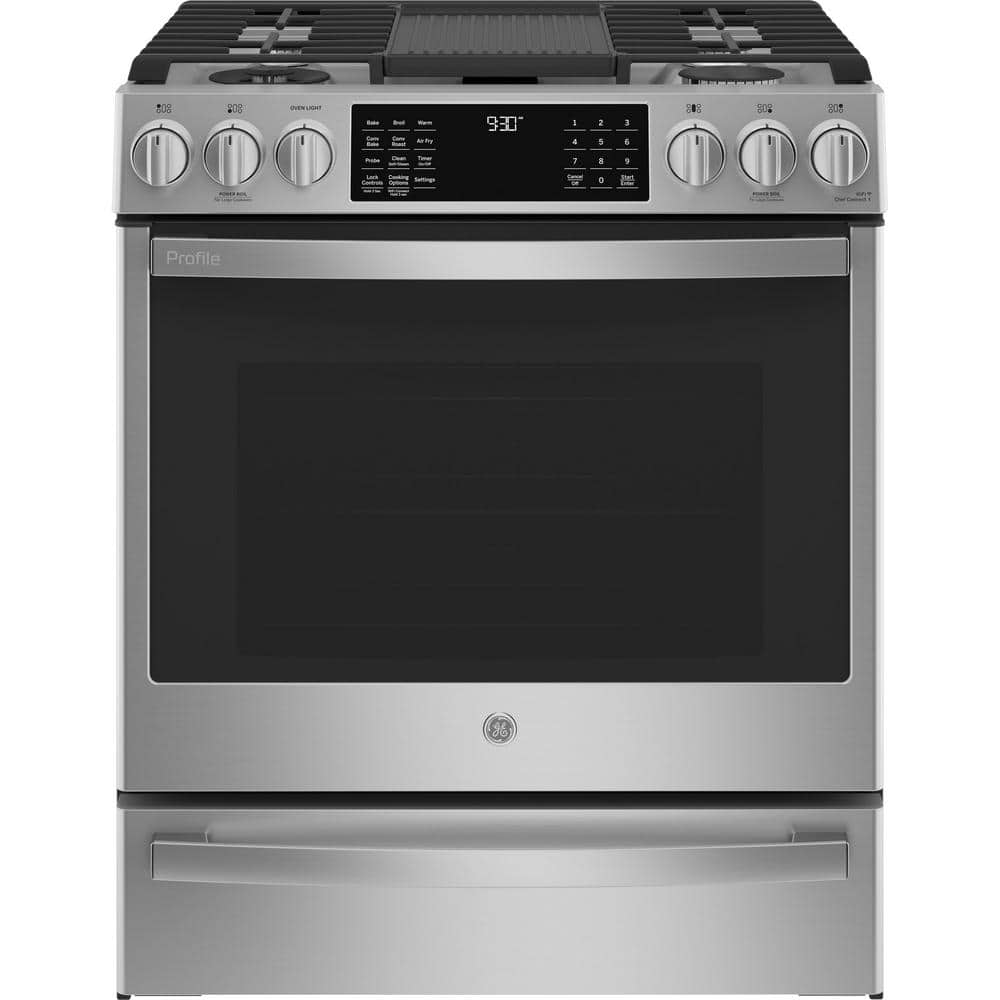
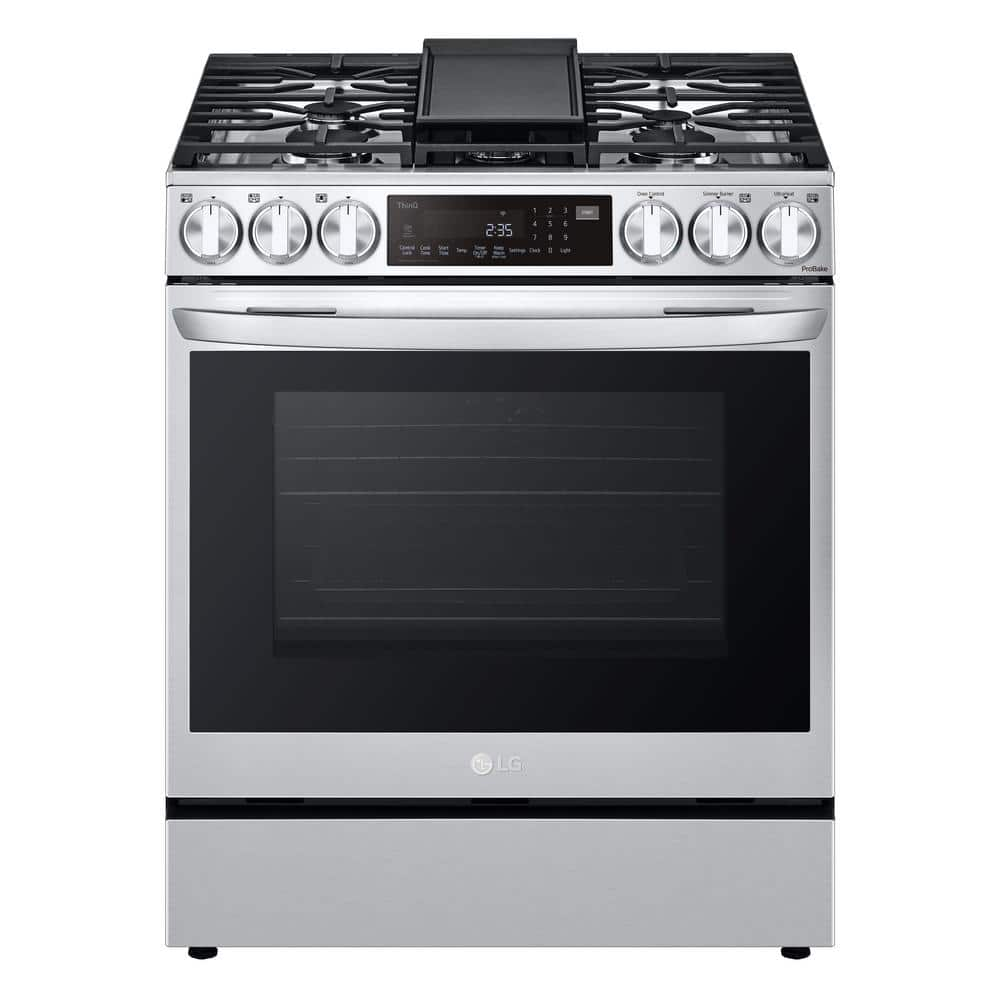
by Ian
It’s very easy for someone who’s electronic Lee incline.
by Ramani
Very nice Range. Made very well. Love the that I can sync it my app.
by Vayyar
Although new to this product, there are many features I am liking already: 1) hassle free installation (fit right into current space), 2) highly sleek design, and 3) easy to use touchpad (note: one con is that the touch pad can be overly sensitive).
by Miata
I like the range but found that out of the box the oven temperature is about 25 degrees off. I googled how to adjust and i guess I am not alone on temps being off. Otherwise, nice classy looking range.
by Zoidberg
Happy with the stove. Wish it came with the grill plate. Has only been one month so far so as long as it holds up I’ll be satisfied.
by Jennifer
Its great for the price! I love gas and this stove does exactly what i needed. I did a complete kitchen remodel and changed over to a range from a cooktop. I needed more oven space and this stove delivered. The only con is the front panel is super sensitive. While cleaning you will definitely turn the oven light on, the oven etc. This is not a good oven for parents with children who may be inquisitive.
by Vans
This is our first gas range and we LOVE it!
We cook a lot and enjoy how quickly water
or substances heat up immediately. Baking is
just as good. Only thing to critique would be
reading the controls. You really can’t see them and they don’t light up to my knowledge. I do highly recommend this one.
by Sandy
Pleased no issues so far install went smooth changed out all the jets fired right up.